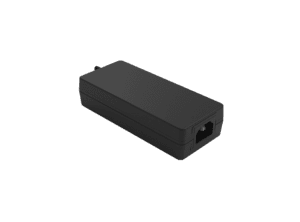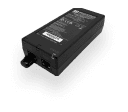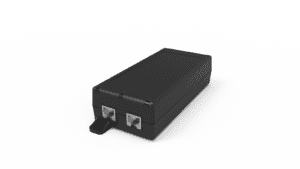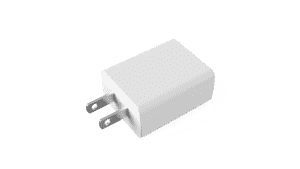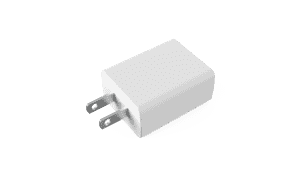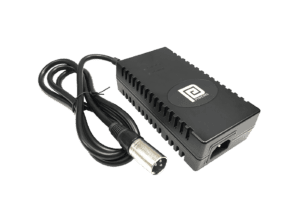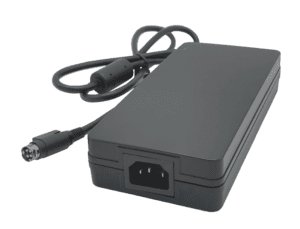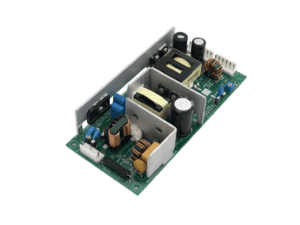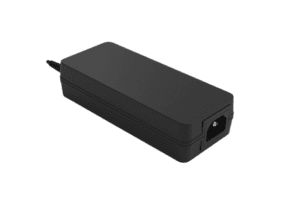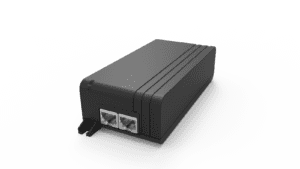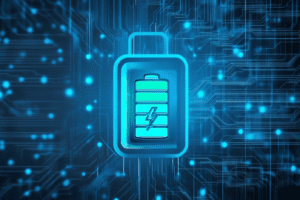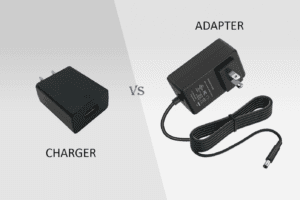BLOG
GaN Charger: The Future of Fast Charging Electronic Devices
QUICK LINKS
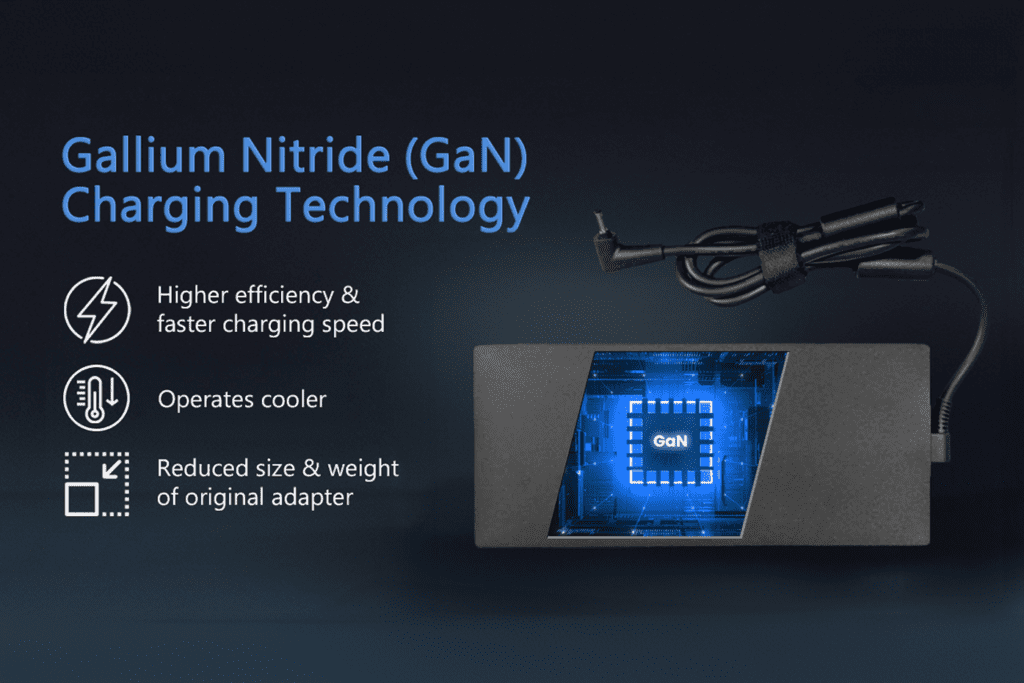
There’s a new charging champion in town: the GaN charger, representing the next generation of smaller and more efficient chargers that can charge electronic devices faster than similarly sized silicon-based chargers currently available in the market today.
Globally there are “Green” initiatives pushing companies to produce more energy-efficient devices. The GaN charger, with its higher efficiency, has a much lower carbon footprint and is quickly becoming the technology of choice for the electronics industry, which is great news for consumers as well as the environment.
The GaN charger’s primary advantages are the ability to increase efficiency and switching frequency. This can result in higher power density of the GaN charger over similarly sized silicon chargers. Simply put; Compared to similar sized silicon-based chargers, GaN chargers can reliably provide higher power in the same footprint, translating into faster charging rates.
Advantages of GaN Chargers
As we’ve discussed previously, the standout feature of a GaN charger is its remarkable ability to rapidly charge our beloved electronic devices faster than a similarly sized silicon-based charger. However, what other benefits accompany its rapid charging capability? Let’s delve deeper into the advantages:
Higher Efficiency
GaN chargers are just more efficient at converting electrical power, resulting in less energy loss during charging. This efficiency leads to reduced heat generation and less energy usage, and that means:
- Money Savings: The consumer saves money on their electricity bill.
- A Cleaner Environment: Less electricity being used; less coal electricity providers burn.
- Prolonged Lifespan: Less heat; less damage to both the charger and the device being charged.
Smaller Size and Lighter Weight
GaN Chargers are smaller and lighter compared to their similarly rated silicon counterparts. A smaller, compact design means lower shipping costs as well as more convenience, especially when traveling or taking the GaN Charger to work or school.
Charging Technologies Compatible with GaN
GaN chargers typically support a range of charging technologies, providing versatility and compatibility with various devices. Here are the most common:
Power Delivery Chargers (PD)
Power Delivery is a fast-charging standard that allows for higher power transfer between a wide range of devices compared to traditional charging methods.
The newest standard, PD 3.1, operates over a USB-C connection. One of the key features of PD 3.1 and its predecessor, PD 3.0, is the support for Programmable Power Supply (PPS). PPS enables devices to request specific voltage and current combinations, which means flexible power negotiation between the charger and the device to ensure efficiency and optimized charging speed.
Qualcomm Quick Charge
Some GaN chargers may support Quick Charge protocols such as Quick Charge 2.0, 3.0, 4.0 or later versions. Quick Charge is commonly found in smartphones and other devices with Qualcomm Snapdragon processors.
Phihong and the Future of GaN Chargers
Phihong has long been recognized as a pioneer in technological innovation, serving as a leading power supply manufacturer for many of the world’s largest Fortune 500 electronics companies. Consequently, it comes as no surprise that Phihong is steadily positioning itself as the manufacturer of choice for GaN chargers.
Currently, Phihong offers GaN Chargers ranging from 60W to 330W, but we’re going to focus in this article on Phihong’s 60W USB-C GaN Charger featuring the winning combination of GaN technology and Power Delivery 3.0. This combination represents a significant enhancement, allowing for higher power output and automatic voltage adjustment within a 5V – 20V range at 3 Amps.
Despite its impressive power capabilities, the charger maintains a compact design, measuring just 2.39” x 2.29” x 1.10”, which underscores Phihong’s dedication to space efficiency and portability.
Phihong’s GaN Charger also features a convenient IEC320 C8 inlet, providing users with a variety of options for AC outlet connectivity. It’s also in compliance with Department of Energy (DoE) regulations, making it suitable for both commercial and consumer electronic products.

CLIENT'S QUOTE
Phihong's Power-Over-Ethernet solutions have transformed our network, boosting efficiency and reducing costs. Their seamless integration has simplified both installation and maintenance.
Explore More with Phihong USA
As we conclude our exploration of GaN technology, it’s evident how these innovations are streamlining power and connectivity across the tech world. Phihong USA stands at the forefront of this technological advancement, offering a diverse range of power solutions designed to meet the evolving needs of modern industries.
Phihong USA’s extensive product lineup includes:
- Power over Ethernet (PoE) Solutions: Delivering reliable power and data transmission over a single cable, ideal for simplifying network installations and reducing costs.
- AC/DC Adapters and Power Supplies: From compact adapters to industrial-grade power supplies, Phihong provides solutions that ensure efficiency and reliability in various applications.
- Battery Chargers: Customizable chargers for lithium-ion and lead-acid batteries, supporting a wide range of power requirements for mobility and industrial applications.
- Medical Power Supplies: Specialized power solutions designed to meet the stringent requirements of the healthcare industry, ensuring safety and reliability.
Phihong USA is committed to innovation and excellence, continually developing products that meet the highest standards of performance and reliability. Their global reach and dedication to customer support make them a trusted partner in powering the future.
Here are some useful links to explore Phihong USA’s offerings further and bring in new potential clients:
Visit Phihong USA to discover how their advanced power solutions can support your business needs. Whether you’re looking to upgrade your network, or find reliable power supplies, Phihong USA has you covered.
By choosing Phihong USA, you’re partnering with a leader in power technology, ensuring your operations run smoothly and efficiently with top-tier power solutions.

Contact Our Team Today!
Our dedicated sales team and international partners are prepared to support you with your latest projects and initiatives globally.
FAQs
What are the specific materials used in GaN chargers that contribute to their efficiency?
GaN (Gallium Nitride) chargers are distinguished by their use of Gallium Nitride as the core semiconductor material, which significantly enhances their efficiency. GaN’s wide bandgap allows it to operate at higher voltages and frequencies than traditional silicon, leading to reduced energy loss and less heat generation. This high efficiency results in faster charging times and lower power consumption. Additionally, the compact nature of GaN components enables more streamlined charger designs without compromising on performance, allowing for smaller and lighter chargers that still deliver optimal power.
How does the lifespan of a GaN charger compare to that of a traditional silicon charger?
The lifespan of GaN chargers typically surpasses that of traditional silicon chargers, largely due to the superior thermal and electrical handling capabilities of GaN. GaN can withstand higher temperatures and voltages with less degradation over time, which translates into a more durable and long-lasting charger. In contrast, silicon-based chargers are more susceptible to heat and stress, which can lead to faster wear and a shorter operational life. This increased durability means that users can expect GaN chargers to maintain their performance and reliability for a longer period, reducing the frequency of replacements.
What are the potential drawbacks or limitations of GaN chargers?
Despite their numerous benefits, GaN chargers do have some drawbacks. One significant limitation is their higher cost compared to silicon-based chargers. The advanced materials and complex manufacturing processes involved in producing GaN chargers contribute to this increased expense. Furthermore, GaN chargers might face compatibility issues with older devices or require specific charging protocols, which could be a concern for users transitioning from traditional chargers. While the performance benefits are substantial, these factors might influence the overall value proposition for some users.

